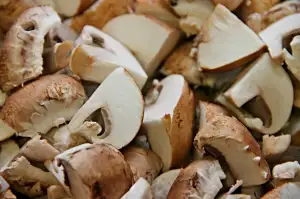Indulge in the Delight of Homemade Butter: A Step-by-Step Guide to Creating Butter at Home

Butter, a beloved ingredient in countless recipes and a staple in many households, is often taken for granted. However, there is something truly special about indulging in the delight of homemade butter. Making butter at home allows you to experience the pure essence of this creamy goodness and appreciate the craftsmanship that goes into its creation.
In this step-by-step guide, we will explore the joys of making homemade butter. From understanding the benefits to gathering the necessary ingredients and following simple instructions, you will soon be able to create your own delectable butter right in your own kitchen. So, let's dive into this wonderful journey and discover how easy it is to make homemade butter that will elevate your culinary creations to new heights.
Benefits of Making Butter at Home
Making butter at home offers a multitude of benefits that go beyond just the satisfaction of creating something from scratch. Here are some compelling reasons to indulge in the delight of homemade butter:
1. Freshness: When you make butter at home, you have complete control over the freshness of the ingredients used. You can choose high-quality cream and ensure that your butter is made with the freshest ingredients available.
2. Taste: Homemade butter has a distinct flavor that surpasses store-bought options. The rich, creamy taste is unparalleled and adds a luxurious touch to any dish it accompanies.
3. Quality Control: By making your own butter, you have full control over the process and can ensure that no additives or preservatives are included. This allows you to create a healthier alternative without compromising on taste.
4. Customization: Homemade butter gives you the freedom to experiment with different flavors and variations. You can add herbs, spices, or even sweet ingredients like honey or maple syrup to create unique and personalized spreads.
5. Cost-effective: Making your own butter can be more cost-effective in the long run, especially if you frequently use it in cooking or baking. By purchasing cream in bulk and churning it into butter yourself, you can save money compared to buying pre-packaged options.
6. Educational Experience: Making homemade butter is not only a delicious endeavor but also an educational one. It provides an opportunity to learn about the science behind emulsification and how simple ingredients transform into a delectable product.
In conclusion, making butter at home offers numerous benefits ranging from freshness and taste to quality control and customization options. So why not embark on this culinary adventure and experience the joy of creating your very own homemade butter?
Ingredients Needed for Homemade Butter
To make homemade butter, you only need one ingredient - heavy cream. Look for high-quality, preferably organic, heavy cream that has a fat content of at least 35%. This higher fat content will result in a richer and creamier butter. Avoid using ultra-pasteurized cream as it may not yield the best results. Additionally, you can add a pinch of salt to enhance the flavor of the butter, but this is optional. With just these simple ingredients, you are ready to embark on your homemade butter-making journey!
Step-by-Step Instructions for Making Homemade Butter
1. Start by pouring fresh, cold cream into a clean mixing bowl. The cream should be at room temperature, so leave it out for a while if necessary.
2. Using an electric mixer or a whisk, beat the cream on medium-high speed until it thickens and forms soft peaks. This process usually takes around 5-7 minutes.
3. Continue beating the cream until it starts to separate and you see small clumps forming. This is the beginning of butter formation.
4. Once the clumps have formed, increase the speed of your mixer or whisk to high and continue beating until the mixture becomes grainy and separates into solid butter and liquid buttermilk.
5. Carefully pour off the buttermilk, reserving it for other recipes if desired.
6. Rinse the butter under cold water to remove any remaining buttermilk. This step is important as any residual buttermilk can cause spoilage.
7. Use clean hands or a wooden spoon to press and knead the butter, removing any excess liquid from it.
8. If desired, add salt to taste during this kneading process to enhance flavor.
9. Shape the butter into a block or roll it into a log using parchment paper or plastic wrap.
10. Place the homemade butter in the refrigerator for at least an hour to firm up before using or storing.
By following these simple steps, you can create your own delicious homemade butter that will elevate your culinary creations to new heights of flavor and richness
Tips and Tricks for Perfect Homemade Butter
1. Use high-quality cream: The quality of your butter will depend on the cream you use. Opt for organic, grass-fed cream for a rich and flavorful butter.
2. Temperature matters: Make sure the cream is at room temperature before churning. Cold cream will take longer to churn and may result in uneven texture.
3. Don't over-churn: Keep a close eye on the cream while churning. Over-churning can turn the butter into a grainy consistency. Stop churning as soon as the butter separates from the buttermilk.
4. Rinse the butter: After separating the butter, rinse it under cold water to remove any remaining buttermilk. This will help improve its shelf life.
5. Add salt to taste: If you prefer salted butter, add a pinch of salt during the rinsing process. This will enhance the flavor and act as a natural preservative.
6. Experiment with flavors: Get creative with your homemade butter by adding herbs, spices, or even sweet ingredients like honey or cinnamon. Mix them in after rinsing for an extra burst of flavor.
7. Shape it beautifully: Once your butter is ready, shape it into a log or use molds to create attractive shapes. Wrap it tightly in wax paper or plastic wrap to maintain its freshness.
Remember, practice makes perfect when it comes to making homemade butter. Don't be discouraged if your first attempt isn't flawless – enjoy the process and savor every creamy bite!
Creative Variations and Flavorings for Homemade Butter
One of the best things about making homemade butter is the ability to get creative with flavors and variations. By adding different ingredients, you can transform your plain butter into a delicious spread that will elevate any dish. Here are some ideas to inspire your culinary experiments:
1. Herb-infused Butter: Add a burst of freshness by mixing in finely chopped herbs like basil, thyme, or rosemary. These herb-infused butters are perfect for spreading on warm bread or melting over grilled vegetables.
2. Citrus Zest Butter: For a zesty twist, mix in grated lemon or orange zest into your butter. The bright citrus flavors will add a refreshing taste to your morning toast or pancakes.
3. Spiced Butter: Experiment with spices like cinnamon, nutmeg, or cardamom for a warm and comforting flavor profile. This spiced butter is excellent when melted over sweet potatoes or used as a topping for freshly baked muffins.
4. Garlic and Parmesan Butter: Combine minced garlic cloves with grated Parmesan cheese to create a savory and aromatic butter that pairs perfectly with crusty bread or tossed into pasta dishes.
5. Honey Butter: For those with a sweet tooth, mix in honey to create a luscious and indulgent spread. This honey butter is heavenly on warm biscuits or drizzled over pancakes.
Remember to start with small amounts of these flavorings and adjust according to your taste preferences. Allow the butter to sit in the refrigerator for at least an hour before using it so that the flavors can meld together.
Get creative and experiment with different combinations of herbs, spices, fruits, or even chocolate chips! The possibilities are endless when it comes to customizing your homemade butter.
By infusing your butter with unique flavors, you can take any meal from ordinary to extraordinary. So go ahead and let your imagination run wild as you explore the world of homemade butter variations.
Serving and Storing Homemade Butter
Once you have successfully made your own homemade butter, it's time to enjoy its rich and creamy goodness. There are several ways to serve and store your homemade butter to ensure its freshness and flavor.
To serve homemade butter, simply transfer it into a small dish or ramekin. You can shape it into a log or use a decorative mold for an elegant presentation. Allow the butter to come to room temperature before serving, as this will enhance its spreadability.
Homemade butter is incredibly versatile and can be used in various dishes. Spread it on warm bread or toast for a simple yet satisfying treat. It can also be used as a base for sauces, melted over steamed vegetables, or added to mashed potatoes for an extra touch of richness.
When it comes to storing homemade butter, there are a few options. If you plan on using it within a week or two, you can keep it at room temperature in a covered dish or butter crock. This will allow the butter to remain soft and easily spreadable.
If you want to store your homemade butter for longer periods, it is best to refrigerate or freeze it. Wrap the butter tightly in wax paper or plastic wrap before placing it in an airtight container. In the refrigerator, homemade butter can last up to three weeks while maintaining its flavor and texture.
For longer storage, freeze the butter in small portions or shaped into cubes. This way, you can easily thaw only what you need without compromising the rest of the batch. Frozen homemade butter can last up to six months without losing its quality.
Remember that homemade butter does not contain any preservatives like store-bought versions do. Therefore, proper storage is crucial to maintain its freshness and prevent spoilage.
By serving and storing your homemade butter correctly, you can continue enjoying its delightful taste long after making it. So go ahead and indulge in the richness of this homemade delight, knowing that you have created something truly special.
In conclusion, making homemade butter is a rewarding and delicious experience. The process may seem daunting at first, but with the right ingredients and techniques, anyone can create their own creamy, flavorful butter at home.
Not only does homemade butter taste superior to store-bought alternatives, but it also allows you to control the quality of ingredients used. By using high-quality cream and adding your choice of flavorings, you can customize your butter to suit your preferences.
The versatility of homemade butter cannot be overstated. From spreading it on warm toast to using it in baking and cooking, the possibilities are endless. Its rich and creamy texture adds depth and richness to any dish it accompanies.
Furthermore, making butter at home is a great way to connect with food on a deeper level. It allows you to appreciate the simplicity and beauty of transforming a single ingredient into something so indulgent and satisfying.
So why not give it a try? Indulge in the delight of homemade butter and elevate your culinary creations to new heights. Whether you enjoy it plain or experiment with different flavors, one thing is for sure – once you taste the richness of homemade butter, there's no going back!
Published: 28. 11. 2023
Category: Food



